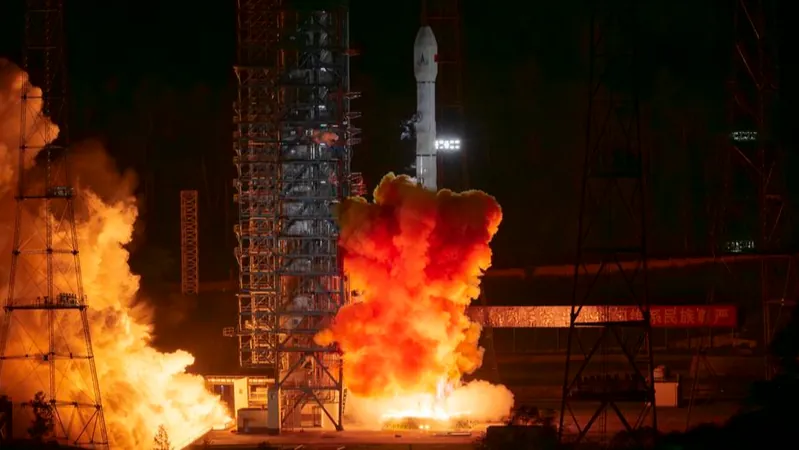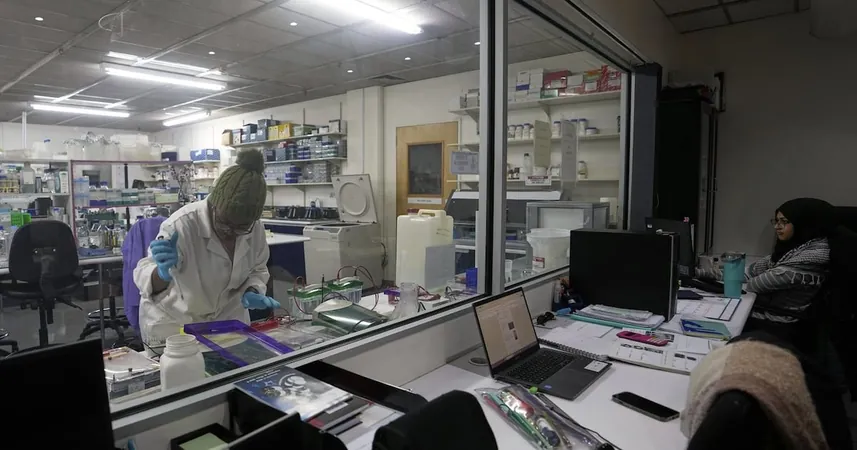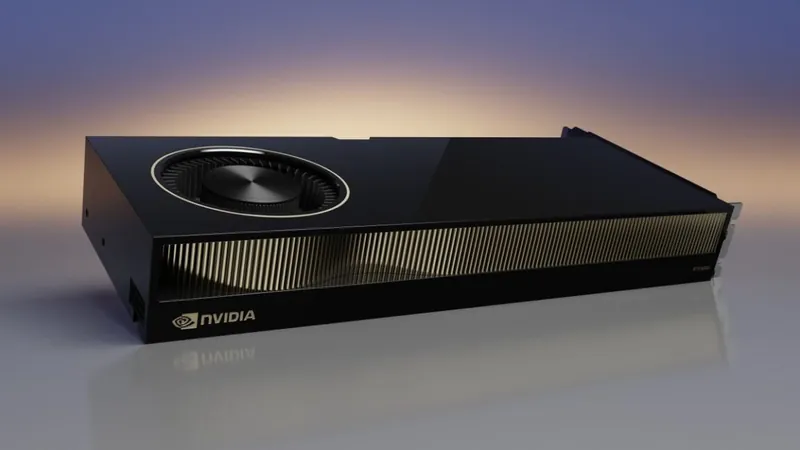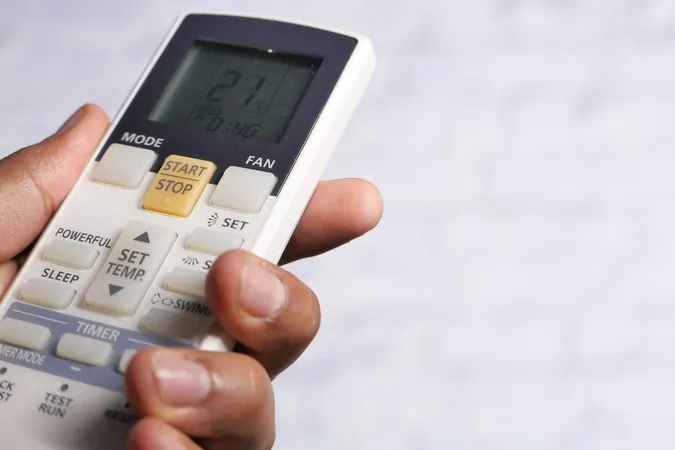
China's Groundbreaking Mission to Collect Asteroid Samples Takes Flight
2025-06-06
Author: Liam
A New Era of Space Exploration for China
In an exciting leap for interplanetary research, China has officially embarked on its first mission to gather samples from an asteroid. The Tianwen 2 project aims to unveil secrets from a small, near-Earth asteroid, bringing samples back to Earth to aid scientific investigation.
The Launch That Set It All in Motion
Hailing from the Xichang Satellite Launch Center in Sichuan province, the Long March 3B rocket took to the skies at 1:31 AM on May 29, successfully deploying the Tianwen 2 robotic probe after an 18-minute ascent. The probe’s solar arrays efficiently unfolded, signaling a successful launch phase, according to the China National Space Administration (CNSA).
A Bold Endeavor with Groundbreaking Goals
Shan Zhongde, head of the Tianwen 2 mission, proclaimed this mission marks a significant chapter in China’s efforts to probe the cosmos. “This journey is complex and ambitious, but with our meticulous planning, we aim to uncover more mysteries of the universe and expand human knowledge,” he stated.
Scientific Objectives: More Than Just Samples
The mission promises to achieve a multitude of goals, including not just sample collection from the asteroid 2016 HO3, but also offering insights into the main-belt comet 311P. 2016 HO3, a quasi-satellite of Earth, is poised to reveal clues about the origins and development of celestial bodies.
Unlocking the Mysteries of Celestial Bodies
Researchers plan to measure various parameters of these celestial bodies—size, shape, and even their thermal emissions will be analyzed. Such studies are critical for unraveling the history and nature of our solar system.
Asteroid 2016 HO3: An Intriguing Companion to Earth
Discovered in 2016, 2016 HO3 orbits the sun in a way that makes it a constant companion to Earth. It is hypothesized that this asteroid was formed from material blasted off the moon during a cosmic collision, making it an extraordinary subject for scientific inquiry.
Aiming for Ambitious Goals
China has previously explored asteroids with a flyby of 4179 Toutatis in 2012. Yet, Tianwen 2 represents a step beyond, featuring advanced maneuvers to procure asteroid samples. Over the next year, the probe will undertake trajectory adjustments to rendezvous with 2016 HO3 for remote observation and data acquisition, eventually leading to its pivotal sampling operation.
Expected Return and Future Missions
By late 2027, the Tianwen 2 is on track to return to Earth’s orbit, releasing the reentry module laden with asteroid specimens. After successfully delivering these treasures, the probe will use Earth’s gravity to slingshot toward 311P, where another remarkable study awaits.
A Broader Vision for Cosmic Exploration
Han Siyuan, a senior planner at CNSA, emphasized the importance of 2016 HO3, explaining how its preserved information could illuminate the early solar system's genesis. The comet 311P further offers an avenue for understanding the material composition of smaller celestial bodies.
The Role of Asteroids in Earth's History
Asteroids are not merely celestial oddities; they hold clues to the pivotal events in Earth’s history, including mass extinction events. Liu Jianjun from the National Astronomical Observatories notes that these bodies contain primordial materials that offer insights into the solar system's formation.
Navigating Challenges Ahead
The Tianwen 2 mission will face significant challenges: sampling in near-zero gravity, managing high-speed asteroid rotation, and overcoming communication delays due to varying distances. In response, planners have developed various sampling techniques tailored to the mission’s requirements.
China's Ambitious Space Agenda
The Tianwen missions symbolize China’s determination to explore beyond its lunar endeavors. Following the success of Tianwen 1 in 2020, which successfully landed on Mars, the country is set for even bolder objectives with Tianwen 3, slated for launch in 2028 to collect Martian samples.









 Brasil (PT)
Brasil (PT)
 Canada (EN)
Canada (EN)
 Chile (ES)
Chile (ES)
 Česko (CS)
Česko (CS)
 대한민국 (KO)
대한민국 (KO)
 España (ES)
España (ES)
 France (FR)
France (FR)
 Hong Kong (EN)
Hong Kong (EN)
 Italia (IT)
Italia (IT)
 日本 (JA)
日本 (JA)
 Magyarország (HU)
Magyarország (HU)
 Norge (NO)
Norge (NO)
 Polska (PL)
Polska (PL)
 Schweiz (DE)
Schweiz (DE)
 Singapore (EN)
Singapore (EN)
 Sverige (SV)
Sverige (SV)
 Suomi (FI)
Suomi (FI)
 Türkiye (TR)
Türkiye (TR)
 الإمارات العربية المتحدة (AR)
الإمارات العربية المتحدة (AR)